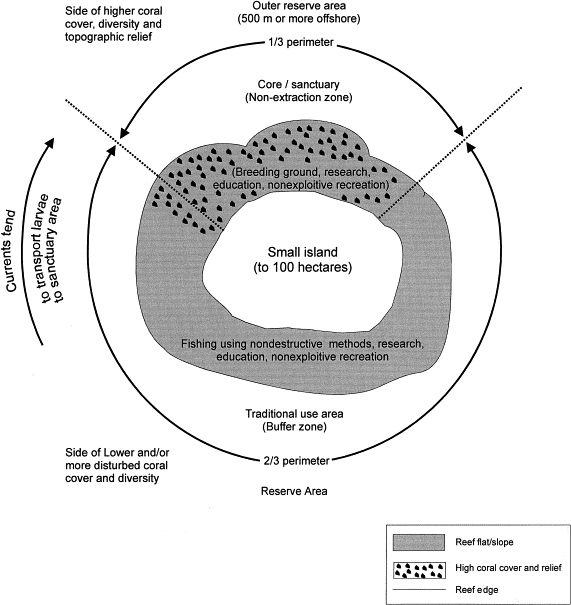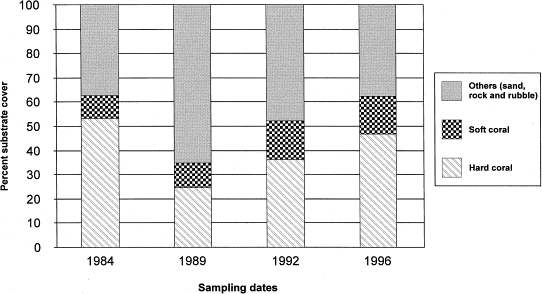CommunityManagement: Difference between revisions
From coraldigest
(→Notes) |
|||
| Line 4: | Line 4: | ||
**What is community management? | **What is community management? | ||
***“Community management is the management of a common resource or issue by a community through the collective action of volunteers and stakeholders.” | ***“Community management is the management of a common resource or issue by a community through the collective action of volunteers and stakeholders.” <ref> http://www.worldfishcenter.org/resource_centre/LessonsLearned1804%20-%20FINAL.pdf </ref> | ||
**Why is community management important? | **Why is community management important? | ||
***Community management is important because without implementation, “a community’s material resources may be depleted or rendered unusable.” | ***Community management is important because without implementation, “a community’s material resources may be depleted or rendered unusable.” | ||
| Line 106: | Line 107: | ||
* http://www.sciencedirect.com/science/article/pii/S0025326X9900243X | * http://www.sciencedirect.com/science/article/pii/S0025326X9900243X | ||
* http://www.worldfishcenter.org/resource_centre/LessonsLearned1804%20-%20FINAL.pdf | * http://www.worldfishcenter.org/resource_centre/LessonsLearned1804%20-%20FINAL.pdf | ||
*http://travel.nytimes.com/2007/06/24/travel/24headsup.html?pagewanted=all&_r=0 | * http://travel.nytimes.com/2007/06/24/travel/24headsup.html?pagewanted=all&_r=0 | ||
*http://www.nytimes.com/2012/07/14/opinion/a-world-without-coral-reefs.html | * http://www.nytimes.com/2012/07/14/opinion/a-world-without-coral-reefs.html | ||
*http://scientistatwork.blogs.nytimes.com/2013/01/29/diving-into-the-coral-triangle/?ref=reefs | * http://scientistatwork.blogs.nytimes.com/2013/01/29/diving-into-the-coral-triangle/?ref=reefs | ||
*http://www.coralscience.org/main/articles/climate-a-ecology-16/the-coral-triangle | * http://www.coralscience.org/main/articles/climate-a-ecology-16/the-coral-triangle | ||
*http://ambergriscaye.com/reefbriefs/briefs13.html | * http://ambergriscaye.com/reefbriefs/briefs13.html | ||
*http://worldwildlife.org/places/coral-triangle | * http://worldwildlife.org/places/coral-triangle | ||
*Camille Antinori and Gustavo A. Garcia-Lopez Cross-Scale Linkages in Common-Pool Resource Management: The Evolution of Forest Associations in the Mexican Forest Commons. Prepared for the 12th IASC 2008 Biennial Conference, University of Gloucester, Cheltenham, England, U.K. | * Camille Antinori and Gustavo A. Garcia-Lopez Cross-Scale Linkages in Common-Pool Resource Management: The Evolution of Forest Associations in the Mexican Forest Commons. Prepared for the 12th IASC 2008 Biennial Conference, University of Gloucester, Cheltenham, England, U.K. | ||
Revision as of 10:07, 16 April 2013
Community-based Reef Management
Introduction:
- What is community management?
- “Community management is the management of a common resource or issue by a community through the collective action of volunteers and stakeholders.” [1]
- What is community management?
- Why is community management important?
- Community management is important because without implementation, “a community’s material resources may be depleted or rendered unusable.”
- Who is responsible for community management programs?
- Local governments, cruise line directors, hotel developers, the community population, developers, industries
- Educating the community increases the importance of coral reef systems, a limited resource, because they provide the human population with food, industry, and concrete building supplies needed to expand cities.
- What is the current state of coral reefs?
- There are approximately 450 species of coral reef framework observed in the Pacific and Indian oceans and 67 species of coral reef framework observed in the Caribbean.
- Observed in more than 60 countries, more than 70% of all coral reefs have been destroyed.
- On the other hand, corals are depleting at a faster rate than they are growing (only grow ½ inch/year).
- Today, coral reefs may be “threatened but, they are still salvageable.”
- The two forces that are both unstoppable and irreversible are acceleration and inertia.
- What is the Coral Triangle?
- The Coral Triangle includes Indonesia, the Philippines, Malaysia, Papua New Guinea, the Solomon Islands, and Timor-Leste.
- The Coral Triangle sustains 590 species of reef-building coral and 4,000 species of fish.
- In addition, the Coral Triangle supports a multi-billion dollar tuna industry.
- 120 million people live in this area and rely on the Coral Triangle for food, income, and protection from harsh storms.
- What are several problems that can occur if we lack coral reef community management?
- Unrestricted tourism
- Depletion of natural resources
- Pollution runoff and overfishing
- Ocean acidification
- Coral reefs are absorbing large amounts of carbon dioxide from the atmosphere.
- Climate Change causing a water temperature increase
- Sea level rise
- Scientists estimate sea level to rise 50 cm within the next 50 years.
- What is causing depletion in coral reef habitats?
- Coastal development and deforestation
- Unrestricted tourism- Annually, the Great Barrier Reef in Australia draws in 1.9 million travelers and makes $4.2 billion revenue.
- Destructive fishing methods that include blasting (cyanide and dynamite) fine mesh nets
- Cruise lines releasing waste water close to coral reefs; restrictions require cruise lines to release waste water at least 4 miles from coral reef boundaries
- Diving
- What are several community management methods?
- Eco-Certification programs for tourism operators
- Although Indonesia’s “human and financial resources are slim”, private tourism businesses and conservationists cooperate together.
- Nature Conservancy’s Coral Triangle Center
- “protects whale migration routes between the Indian and Pacific Oceans”
- Komodo National Park
- Banned blast fishing which has helped increase hard coral coverage by 60% within 6 years
- Established well-enforced no-take zone
- Communities in Indonesia are improving the resilience of the reefs and its habitats
- Increase and support the growth of mangroves
- Reduces greenhouse gases as a result of runoff
- Nursery areas for fish
- Filters runoff pollutants
- Why is community management important?
Characteristics of successful community-based management: [2]
- Creating a coral reef management plan with community input that includes not only ecological conditions but also socioeconomic concerns (environmental regeneration and preservation of the reefs and livelihood enhancement for communities) -> should not trade off environmental preservation for poverty
- The planning process should be transparent and fair
- Successful communication between administrative/government officials and stakeholders in the community
- Clear and concise rules of access, withdrawal, exclusion etc.
- Rules must be made with community involvement and support
- For example: issuing a limited number of fishing permits, creating user organizations so as to monitor any illegal withdrawal of reef fish etc.
- Rules must be made with community involvement and support
- Clear and concise rules of access, withdrawal, exclusion etc.
- Capacity building within the community, including education and empowerment so that community members are both made cognizant of the importance of coral reefs in global biodiversity and take ownership of them.
- Public awareness campaigns
- Institutional buy-ins
- Effective monitoring of coral reefs
- Effective enforcement of rules of access/withdrawal/exclusion etc.
- Communication between stakeholders & venues for resolving any conflicts
- Allow for iterative feedback loops so that government, interested NGOs, and community members can learn from past mistakes and work together for more sustainable future.
Case Studies of successful community-based management:
- Indonesia: Community-based coral reef management[3]
- Coral Reef Rehabilitation and Management Program I
- Compliance increased by 10% after the implementation of the management project
- Illegal and over fishing as well as coral mining in pilot locations decreased 50% after the management project was constructed
- Lessons learned from Indonesia’s experiment with community-based coral reef management:
- Communities must be central to the planning, implementation, and post-project portions.
- There should be communication and agreement between national/state/local governments as well as coastal communities.
- Coral Reef Rehabilitation and Management Program I

- Community-based coral reef management on san Salvador island, the Philippines [4]
- MCPSS (1988)
- Through community education, organization and participatory decision making developed municipal marine park, non-fishing sanctuary, and fishing reserves surrounding the island reduced destructive fishing methods leading to a decline fish population (blasting, fine mesh nets and sodium cyanide)
- Affect societal change through mass organizations or unions
- education, capacity building, and implementing concrete community projects, train community leaders with the knowledge and skills for sustainable resource management, and establish a network system
- Three islands: Apo, Pamilacan, and Balicasag
- Establishing a municipal marine reserve and sanctuary stopped coral reef destruction
- MCPSS (1988)

- Community-based reef conservation in the Philippines [5]
- Provinces of Negros Oriental, Batangas and the Tubbataha Reef National Marine Park, Palawan
- In Negros and Batangas, coastal communities and fishermen are included in the decision-making process. These communities fish using nondestructive methods (allowing reef fish to regenerate sustainably) and the reefs are divided into zones so that fishing does not happen in breeding grounds.
- Coral reef cover (for hard and soft corals) has been increasing since this policy was put into place.
Conclusion
- Through identifying three community-based management systems located in the Coral Triangle, Indonesia, San Salvador Island, and other provinces in the Philippines, scientists analyze the impacts communities have on both marine waters and marine biodiversity.
- After identifying the island’s local factors that contribute to marine destruction, scientists and government officials work to develop a community-based management plan to prevent and protect the surrounding waters, plants, and animals.
- With proper funding and support, education within the community, industrial runoff regulations, non-fishing reserves, training community leaders, divided reef zones based on breeding grounds, fishing permits, coral mining bans, fishing regulations and an increase in mangrove growth are just a few community-based management projects implemented throughout the Coral Triangle region. Since implementing these community-based management projects, the Coral Triangle region’s coral reefs have improved in health.
Notes
- ↑ http://www.worldfishcenter.org/resource_centre/LessonsLearned1804%20-%20FINAL.pdf
- ↑ http://www.worldfishcenter.org/resource_centre/LessonsLearned1804%20-%20FINAL.pdf
- ↑ http://go.worldbank.org/CFJDWJVOY0
- ↑ http://www.tandfonline.com/doi/abs/10.1080/08941929409380849
- ↑ http://www.sciencedirect.com/science/article/pii/S0025326X9900243X
- http://go.worldbank.org/CFJDWJVOY0
- http://www.tandfonline.com/doi/abs/10.1080/08941929409380849
- http://www.sciencedirect.com/science/article/pii/S0025326X9900243X
- http://www.worldfishcenter.org/resource_centre/LessonsLearned1804%20-%20FINAL.pdf
- http://travel.nytimes.com/2007/06/24/travel/24headsup.html?pagewanted=all&_r=0
- http://www.nytimes.com/2012/07/14/opinion/a-world-without-coral-reefs.html
- http://scientistatwork.blogs.nytimes.com/2013/01/29/diving-into-the-coral-triangle/?ref=reefs
- http://www.coralscience.org/main/articles/climate-a-ecology-16/the-coral-triangle
- http://ambergriscaye.com/reefbriefs/briefs13.html
- http://worldwildlife.org/places/coral-triangle
- Camille Antinori and Gustavo A. Garcia-Lopez Cross-Scale Linkages in Common-Pool Resource Management: The Evolution of Forest Associations in the Mexican Forest Commons. Prepared for the 12th IASC 2008 Biennial Conference, University of Gloucester, Cheltenham, England, U.K.